Learning Package 5 - Viruses - The Spanish Flu
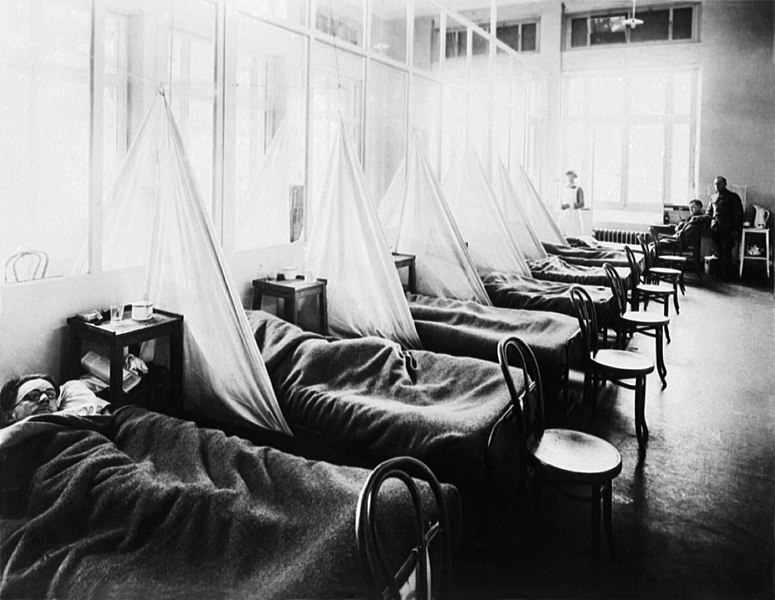
Photo credit: Retrieved from commons.wikimedia.org/wiki/File:USCampHospital45InfluenzaWard.jpg
“I had a little bird
its name was Enza
I opened the window,
And in-flu-enza.”
(1918 children’s jump rope rhyme)1
The influenza pandemic from 1918 to 1919 is also known as the Spanish Flu, or La Grippe, although the first known case was reported at a military base in Kansas, United States on 11 March 1918.2 As a neutral country during World War I, Spain was able to freely report on the outbreak unlike most European media that had either imposed a news blackout or downplayed the virus to maintain high morale. Hence, with most of the news about the flu reported from Spain, the origin of the outbreak was mistakenly attributed to the country.3
The Spanish Flu circled the globe at a breakneck speed due to massive wartime troop movements during World War I.4 It spread swiftly across the world from the U.S. and Europe to Asia, Australia and even the remote Pacific Islands.5 Within a year, nearly one third of the world’s population (1.8 billion in 1918) were infected and an estimated 50 to 100 million had succumbed to the disease.6
The Spanish Flu was caused by an influenza A virus known as H1N1. As with most strains of influenza, it was contagious, spreading easily through the coughs and/or sneezes of infected persons. In parts of the United States for example, measures such as quarantine, the wearing of masks and closure of public places like schools, were put in place to help slow down transmission.7 In Singapore, the colonial government instituted a series of preventive measures. For example, infected persons were advised to isolate themselves and seek treatment and public premises were disinfected daily.8
An unusual feature of the Spanish Flu was the high mortality in healthy adults. The elderly were less susceptible as they had survived a similar but less virulent strain of the flu in the 1830s.9
844 deaths were officially attributed to the Spanish flu in Singapore. However, the 1918 Annual Report estimated that the actual number of deaths was 3,500 while the 1921 Annual Report added that many deaths reported as pneumonia were due primarily to influenza. These reflected the challenges faced in providing accurate data as tropical countries do not have well-defined influenza seasons.10
To learn more about the Spanish Flu, check out the resources listed below. Look out for our next instalment, which will explore other major pandemics from the 20th century.
Books/ Ebooks/ Audiobooks
1. Between hope and fear: A history of vaccines and human immunity
Kinch, M. (2018). Between hope and fear: A history of vaccines and human immunity. New York: Pegasus Books. Retrieved from OverDrive. (myLibrary ID is required to access this ebook.)
2. Influenza: The hundred year hunt to cure the deadliest disease in history
Brown, J. (2018). Influenza: The hundred year hunt to cure the deadliest disease in history. New York: Simon & Schuster Audio. Retrieved from OverDrive. (myLibrary ID is required to access the audiobook)
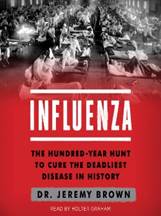
3. Pandemic 1918: The story of the deadliest influenza in history
Arnold, C. (2018). Pandemic 1918: The story of the deadliest influenza in history. London, UK: Michael O’Mara Books. Retrieved from OverDrive. (myLibrary ID is required to access the eBook)
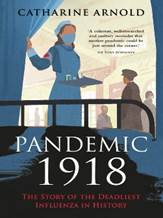
4. The great influenza: The epic story of the deadliest plague in history
Barry, J. M. (2005). The great influenza: The epic story of the deadliest plague in history. New York: Penguin Publishing Group. Retrieved from OverDrive. (myLibrary ID is required to access the eBook)
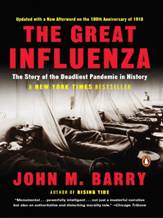
5. Pale rider: The Spanish Flu of 1918 and how it changed the world
Spinney, L. (2017). Pale rider: The Spanish Flu of 1918 and how it changed the world. New York: Public Affairs.
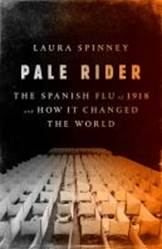
Videos and Podcasts
1. Spanish Flu: A warning from history
Source: Spanish Flu: A warning from history. (2018, November 30). Cambridge University. Retrieved 2020, April 1.
2. Why the 1918 Spanish Flu probably didn't originate in Spain
Source: Why the 1918 Spanish Flu probably didn’t originate in Spain. (2019, March 1). Smithsonian Channel. Retrieved 2020, April 1.
3. ECCMID 2018: Colin Russel keynote lecture on the 100-year anniversary of the Spanish flu
Source: ECCMID (European Congress of Clinical Microbiology and Infectious Diseases) 2018: Colin Russel keynote lecture on the 100-year anniversary of the Spanish flu. (2018, April 23). European Society of Clinical Microbiology and Infectious Diseases (ESCMID). Retrieved 2020, April 1.
4. The Spanish Flu was deadlier than WWI
Source: The Spanish Flu was deadlier than WWI. (2019, February 28). History. Retrieved 2020, April 1.
5. Lessons from the 1918 Spanish flu pandemic
Humphreys, R. & Spinney, L. (2020, March 31). Lessons from the 1918 Spanish flu pandemic. The Guardian. Retrieved 2020, April 1.
6. Resurrecting the killer
Resurrecting the killer. (2018, June 28). Going Viral: The mother of all pandemics. Retrieved 2020, April 1.
Websites
1. The deadliest flu: The complete story of the discovery and reconstruction of the 1918 pandemic virus
Jordan, D., Tumpey, T. & Jester, B. (2019, December 17). The deadliest flu: The complete story of the discovery and reconstruction of the 1918 pandemic virus. Centers for Disease Control and Prevention. Retrieved 2020, April 1.
2. The flu that transformed the 20th century
Spinney, L. (2018, October 18). The flu that transformed the 20th century. BBC. Retrieved 2020, April 1.
3. The Spanish Flu (1918-20): The global impact of the largest influenza pandemic in history
SRoser, M. (2020, March 4). The Spanish Flu (1918-20): The global impact of the largest influenza pandemic in history. Our World in Data. Retrieved 2020, April 1.
4. Spanish Flu
Spanish Flu. (2020, March 24). History. Retrieved 2020, April 1.
5. The 1918 Flu 100 years later
The 1918 Flu 100 years later. (2018, April). Iowa Department of Public Health. Retrieved 2020, April 1.
If you are interested to learn more about the Spanish Flu, check out the following journal articles and resources in Chinese, Malay and Tamil.
Journal Articles
1. Philadelphia threw a WWI parade that gave thousands of onlookers the flu
Davis, K. C. (2018, September 21). Philadelphia threw a WWI parade that gave thousands of onlookers the flu. Smithsonian magazine. Retrieved 2020, April 1.
2. Rampant lies, fake cures and not enough beds
Zeitz, J. (2020, March 17). Rampant lies, fake cures and not enough beds: What the Spanish Flu debacle can teach us about coronavirus. Politico Magazine. Retrieved 2020, April 1.
3. Spanish Flu may have lingered two years before 1918 outbreak and vaccine could have treated it
Taylor & Francis Group. (2019, May 23). Spanish Flu may have lingered two years before 1918 outbreak and vaccine could have treated it. ScienceDaily. Retrieved 2020, April 1.
4. The Spanish influenza pandemic: A lesson from history 100 years after 1918
Martini, M. [et. al.]. (2019, March). The Spanish influenza pandemic: A lesson from history 100 years after 1918. Journal of Preventive Medicine and Hygiene, 60(1), 64-67. Retrieved 2020, April 1.
5. A possible European origin of the Spanish influenza and the first attempts to reduce mortality to combat superinfecting bacteria: an opinion from a virologist and a military historian
MOxford, J. S. & Gill, D. (2019, May 23). A possible European origin of the Spanish influenza and the first attempts to reduce mortality to combat superinfecting bacteria: an opinion from a virologist and a military historian. Immunotherapeutics, 15(9), 2009-2012. Retrieved 2020, April 1.
Chinese, Malay and Tamil resources
1. 改变20世纪人类历史的西班牙大流感
劳拉·斯宾尼。(2018年 12月 4日)。改变20世纪人类历史的西班牙大流感。BBC 英伦网。 Retrieved 2020, March 30.
This article explores how the Spanish Flu (1918-1919) infected a third of the global population and changed the world.
2. 1918年西班牙流感,最致命的流行病
冯洁音。(2020年2月18日)。1918年西班牙流感,最致命的流行病。读书网。 Retrieved 2020, March 30.
This article describes the research on the virus that caused the Spanish Flu, from scientists trying to recover genetic information of the virus to experimenting with the reconstructed virus to understand its pathogenesis.
3. Penyakit flu yang mengubah abad ke-20: Menghilangkan satu generasi dan memperbaiki layanan kesehatan
Spinney, L. (2018, October 30). Penyakit flu yang mengubah abad ke-20: Menghilangkan satu generasi dan memperbaiki layanan kesehatan. BBC News Indonesia. Retrieved 2020, March 31.
This article looks at the 1918 Spanish Flu pandemic that took place when the world was trying to recover from World War I and highlights how the strongest were ironically the most vulnerable to infection.
4. கொரோனா வைரஸ்: இந்தியாவில் 1918-இல் பரவிய ஸ்பானிஷ் ஃப்ளூ - நாம் கற்றுக் கொள்ள வேண்டியது என்ன?
கொரோனா வைரஸ்: இந்தியாவில் 1918-இல் பரவிய ஸ்பானிஷ் ஃப்ளூ - நாம் கற்றுக் கொள்ள வேண்டியது என்ன? (March 18, 2020). BBC News Tamil. Retrieved 2020, April 1.
This article examines lessons that can be learnt from the Spanish Flu in relation to the COVID-19 outbreak.
Disclaimer/ Rights statement
The information in this resource guide is valid as of April 2020 and correct as far as we are able to ascertain from our sources. It is not intended to be an exhaustive or complete history on the subject. Please contact the Library for further reading materials on the topic.
All Rights Reserved. National Library Board Singapore 2020.
References
-
Influenza pandemic. (n.d.). University of Washington University Libraries. Retrieved 2020, April 3 from https://content.lib.washington.edu/exhibits/WWI/influenza.html ↩
-
Strochlic, N. and Champine, R. D. (2020, March 27). How some cities ‘flattened the curve’ during the 1918 flu pandemic. National Geographic. Retrieved 2020, April 3 from https://www.nationalgeographic.com/history/2020/03/how-cities-flattened-curve-1918-spanish-flu-pandemic-coronavirus/ ; Billings, M. (2005, February). The influenza pandemic of 1918. Human Virology at Stanford University. Retrieved 2020, April 3 from https://virus.stanford.edu/uda/ ↩
-
Spanish Flu. (2020, March 27). History.com. Retrieved 2020, April 5 from https://www.history.com/topics/world-war-i/1918-flu-pandemic ↩
-
Roos, D. (2020, March 30). Why the second wave of the 1918 Spanish Flu was so deadly. History. Retrieved 2020, April 3 from https://www.history.com/news/spanish-flu-second-wave-resurgence ↩
-
Andrews, E. (2016, January 12). Why was it called the ‘Spanish Flu’? History. Retrieved 2020, April 3 from https://www.history.com/news/why-was-it-called-the-spanish-flu ↩
-
1918 Pandemic (H1N1 virus). (2019, March 20). Centers for Disease Control and Prevention. Retrieved 2020, April 3 from https://www.cdc.gov/flu/pandemic-resources/1918-pandemic-h1n1.html; Devlin, H. (2020, March 3). Four lessons the Spanish Flu can teach us about coronavirus. The Guardian. Retrieved 2020, April 3 from https://www.theguardian.com/world/2020/mar/03/four-lessons-the-spanish-flu-can-teach-us-about-coronavirus; Roser, M. (2020, March 4). The Spanish Flu (1918-20): The global impact of the largest influenza pandemic in history. Our World in Data. Retrieved 2020, April 3 from https://ourworldindata.org/spanish-flu-largest-influenza-pandemic-in-history ↩
-
Spanish Flu. (2020, March 27). History.com. Retrieved 2020, April 5 from https://www.history.com/topics/world-war-i/1918-flu-pandemic ↩
-
Lee VJ, Chen MI, Chan SP, Wong CS, Cutter J, Goh KT, et al. (2007, July). Influenza pandemics in Singapore, a tropical, globally connected city. Emerg Infect Dis. Retrieved 2020, April 10 from http://www.cdc.gov/eid/content/13/7/1052.htm ↩
-
Dowling, S. (2020, March 3). Coronavirus: What can we learn from the Spanish Flu? BBC. Retrieved 2020, April 3 from https://www.bbc.com/future/article/20200302-coronavirus-what-can-we-learn-from-the-spanish-flu ↩
-
Lee VJ, Chen MI, Chan SP, Wong CS, Cutter J, Goh KT, et al. (2007, July). Influenza pandemics in Singapore, a tropical, globally connected city. Emerg Infect Dis. Retrieved 2020, April 10 from http://www.cdc.gov/eid/content/13/7/1052.htm ↩


